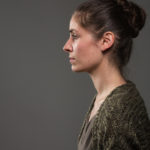I saw and heard, and knew at last
The How and Why of all things, past,
And present, and forevermore.
-from Renascence by Edna St. Vincent Millay
It is fitting that, in The How and The Why, Zelda’s favorite poet is Edna St. Vincent Millay. Millay was a revolutionary poet of her time: a woman, a boundary-pusher, a Pulitzer Prize-winner, and a First Wave feminist activist.
Zelda herself is a boundary-pusher; a woman borne of the Second Wave who made tremendous sacrifices to rise to the top of her male dominated field with a groundbreaking feminist hypothesis.
 Rachel, just half of Zelda’s age and hungry for the approval of her scientific peers, follows in Zelda’s footsteps with an even more radical hypothesis that might change the way we think about the female reproductive system. These characters, inspired by real women and their extraordinary contributions to the field of evolutionary biology, struggle for survival and insight in an inhospitable environment.
Rachel, just half of Zelda’s age and hungry for the approval of her scientific peers, follows in Zelda’s footsteps with an even more radical hypothesis that might change the way we think about the female reproductive system. These characters, inspired by real women and their extraordinary contributions to the field of evolutionary biology, struggle for survival and insight in an inhospitable environment.
 Director Philip Cuomo chose The How and The Why as an “energetic link” between The Gun Show, CoHo’s first play of the season, and the upcoming world premiere of db. Treem’s play not only provides thematic, stylistic and emotional balance to CoHo’s season, it offers two dynamic roles for women. “Portland is rife with talented female actors of various ages,” Cuomo said, “and CoHo is committed to providing them opportunities like this. I am graced and honored to be working with Karen Trumbo and Gwendolyn Duffy, who ably tackled this challenging text.”
Director Philip Cuomo chose The How and The Why as an “energetic link” between The Gun Show, CoHo’s first play of the season, and the upcoming world premiere of db. Treem’s play not only provides thematic, stylistic and emotional balance to CoHo’s season, it offers two dynamic roles for women. “Portland is rife with talented female actors of various ages,” Cuomo said, “and CoHo is committed to providing them opportunities like this. I am graced and honored to be working with Karen Trumbo and Gwendolyn Duffy, who ably tackled this challenging text.”
Culturally, we continue to condition people to associate scientific expertise and accomplishment with men, making it all the more difficult for women scientists to succeed in the workforce. Male scientists discovered the “how” of menstruation and menopause long ago, but the “why” wasn’t even considered until women began to study it.
Sarah Treem’s play is revolutionary in that it explores the bias toward the male perspective and offers public discourse about menstruation and menopause through a scientific, woman-driven, multi-generational lens. But, Treem’s passionate and clinical dialogue coaxes out a story so much deeper than the science. This is not a play about the female reproductive system at all. It is a play about the how and the why of life.
- Jessica Dart, Artistic Fellow & Production Dramaturg






